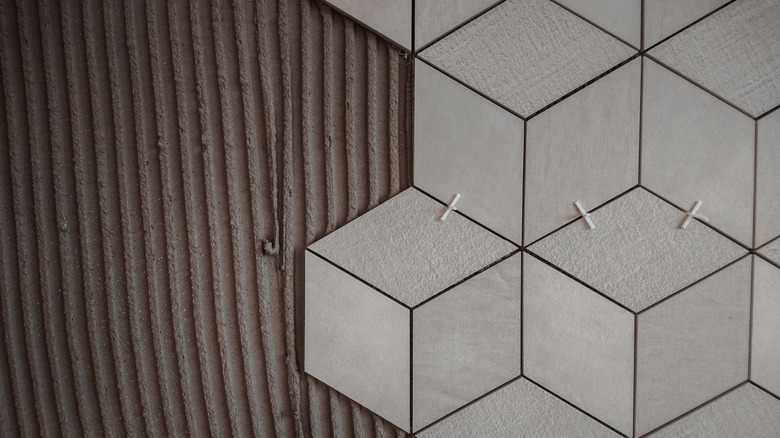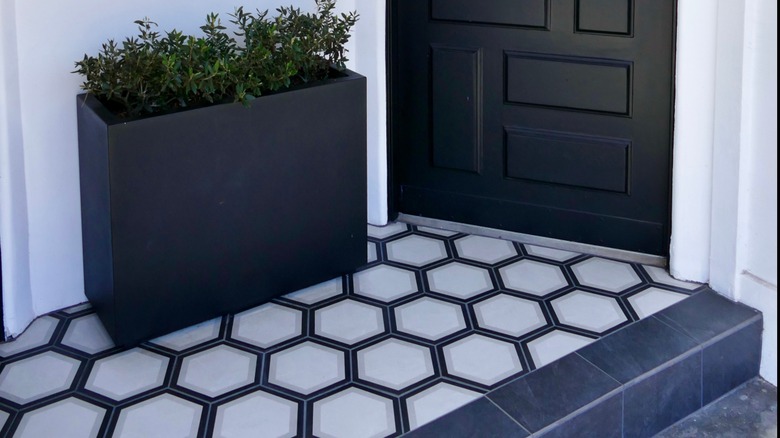DIY Stunning Designer Tiles For A Fraction Of The Cost With This TikTok Project
Cement tiles are flourishing in popularity due to their timeless beauty and durability, often serving as an alternative to traditional ceramic tiles. These versatile tiles are notable for their matte finish and beautiful texture and color. Some high-end cement tiles, however, can cost around $100 per square foot, which might have you hunting for a less expensive option. TikTok user @aimabledesordre has a great DIY solution for getting unique and stylish tiles at a fraction of the cost of a design she had her eye on. Instead of purchasing the more expensive retail tiles for her entryway, she instead opted to create her own molded tiles using rapid-set cement and a silicone mold.
This approach is a great idea if you are looking to create unique custom ties at an affordable price with some DIY flair and uniqueness. While they may not be right for all spaces or homes, DIY concrete tiles can be a stylish way to set your home apart and get the exact look you desire.
Making DIY cement tiles
To create custom cement tiles, begin by using clay to mold out a prototype template of your tile design. Most simple shapes can be cut from a rolled-out clay disc. Use a two-part silicone in a flat container, pressing your clay prototype and allowing the mold to dry around it. When you remove the prototype, the mold will be ready for your cement. Unlike ceramic tiles, the cement will set completely at room temperature and require no heat or firing.
Rapid set cement usually works in a four-to-one ratio of powder to water, but you may want to experiment with any added colors or material to get just the right mix and results. While the cement will be dry and can be removed from the mold in about an hour, allow the tiles to fully dry overnight before using. The process can be time-consuming for tiling larger spaces, so you may want to create more than one silicone mold to work faster. Lay cement tile the way you would any tile with a tile adhesive and your desired variety of grout. You will also want to add at least two coats of stone and tile sealant after you are done to protect the tile.
Where to use your DIY tiles
While cement tiles can be gorgeous, they may not be right for all homes due to their surface porousness and irregularities that make laying them more challenging. Problems include a tendency to stain, even during the grouting process if you're using a pigmented or darker grout. This means the tiles are very likely to pick up stains in a high-traffic area like a kitchen backsplash or floor that can be impossible to remove. One Tiktok commenter suggested adding two additional coats of sealant just to be safe. Others recommend regular periodic resealing to keep the tiles looking their best. While they can prove more durable to wear than ceramic tiles, extreme variations in temperature or improper installation may lead to cracking or damage.
For best results, try putting your new DIY cement tiles in a spot where they are less likely to encounter color-saturated spills and stains like a laundry room or bath. They also make a beautiful option for limited tiled areas like hallway and entryway flooring. Cement tiles can also work great for smaller tiling projects like benches or faux or gas fireplace surrounds. You can also use them in small doses as a rustic décor accent inset or border combined with other kinds of tile.

